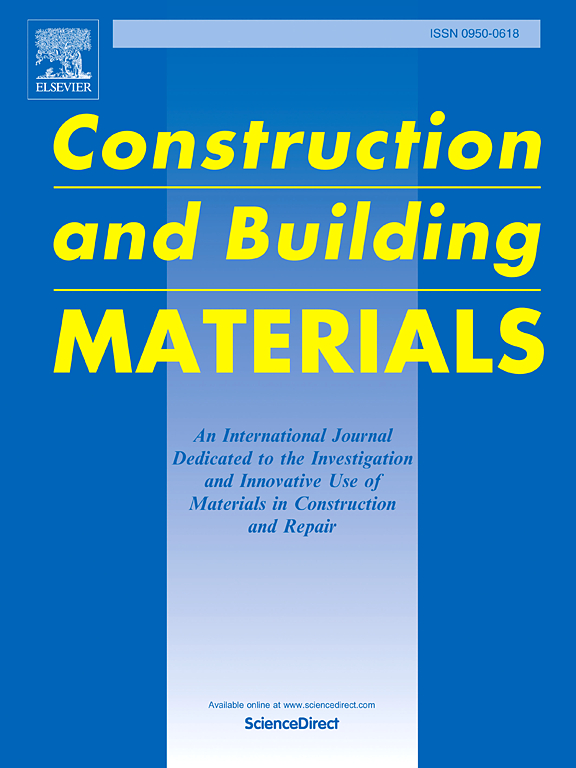Time-dependent small strain properties of a lime-treated lean clay
IF 7.4
1区 工程技术
Q1 CONSTRUCTION & BUILDING TECHNOLOGY
引用次数: 0
Abstract
This paper evaluates the time-dependent small strain properties of a lime-treated red mudstone fill material (LRMF) during long-term curing up to 8640 hours. The main objective is to develop a unified framework describing the S-shape evolution mode of small strain shear modulus and Poisson’s ratio . With this emphasis, a series of bender-extender element tests was conducted on LRMF compacted at three void ratios and two lime contents. Three-stages, namely, stage I (initial curing), stage II (primary curing) and stage III (secondary curing) were clearly clarified. Such a pattern was captured well by the small strain properties characteristic curve (SSPCC). The separations between each stage were reasonably determined by examining the inflection point and the tangent at the inflection point. The feasibility of the proposed framework was verified by applying SSPCC to not only RMF, but also to a wide range of artificial soils including lime-treated silt and cemented clay. Microfabric modification was found responsible for the three-stage behavior of small strain properties. Compared to the untreated specimen, the lime hydration causes an evident pore volume transition where the noticeable increase in is observed even at short curing period. This transition proceeds at stage II, leading to the densification in soil fabrics and the progressive growth in . Further curing period denotes the slowdown of the pore structure change and the agglomeration, from which the stage III can be determined.
石灰处理过的稀粘土随时间变化的小应变特性
本文评价了石灰处理的红泥岩填料(LRMF)在8640 小时的长期养护过程中随时间变化的小应变特性。主要目的是建立一个统一的框架来描述小应变剪切模量Gmax和泊松比v的s形演化模式,以此为重点,对三种空隙比和两种石灰含量的LRMF压实进行了一系列弯曲-延伸器单元试验。明确了阶段1(初固化)、阶段2(初固化)和阶段3(二次固化)三个阶段。小应变特性曲线(SSPCC)很好地反映了这种模式。通过观察拐点和拐点处的切线,合理地确定了各阶段之间的间隔。通过将SSPCC不仅应用于RMF,而且应用于广泛的人工土壤,包括石灰处理的粉土和胶结粘土,验证了该框架的可行性。微织物改性对小应变性能的三阶段行为负责。与未处理的试样相比,石灰水化引起了明显的孔体积转变,即使在较短的养护时间内,Gmax也明显增加。这种转变发生在第二阶段,导致土壤组织致密化,Gmax逐渐增大。随着龄期的延长,孔隙结构的变化和结块的速度减慢,由此可以确定为第三阶段。
本文章由计算机程序翻译,如有差异,请以英文原文为准。
求助全文
约1分钟内获得全文
求助全文
来源期刊

Construction and Building Materials
工程技术-材料科学:综合
CiteScore
13.80
自引率
21.60%
发文量
3632
审稿时长
82 days
期刊介绍:
Construction and Building Materials offers an international platform for sharing innovative and original research and development in the realm of construction and building materials, along with their practical applications in new projects and repair practices. The journal publishes a diverse array of pioneering research and application papers, detailing laboratory investigations and, to a limited extent, numerical analyses or reports on full-scale projects. Multi-part papers are discouraged.
Additionally, Construction and Building Materials features comprehensive case studies and insightful review articles that contribute to new insights in the field. Our focus is on papers related to construction materials, excluding those on structural engineering, geotechnics, and unbound highway layers. Covered materials and technologies encompass cement, concrete reinforcement, bricks and mortars, additives, corrosion technology, ceramics, timber, steel, polymers, glass fibers, recycled materials, bamboo, rammed earth, non-conventional building materials, bituminous materials, and applications in railway materials.
 求助内容:
求助内容: 应助结果提醒方式:
应助结果提醒方式:


